Recording Ukulele: Essential Audio & Video Recording Gear
A Complete A to Z List of the Gear I Use
In this article, I will highlight all of the essential gear needed to begin recording ukulele at a professional level. We will also cover the gear needed to create high quality HD video recordings of your ukulele playing. This list contains the exact gear that I use to record every lesson on Rock Class 101. This article is part of The Ultimate Guide to Recording Ukulele. The guide is a complete course that teaches you how to set up the gear and use/understand the recording and video editing software. So, be sure to check out the complete course (which is FREE)!
Audio Interface

Roland QuadCapture Audio Interface
Think of an audio interface as a very high quality sound card. This little machine is what you will plug your ukulele (if it has a pickup) and microphones into. It then connects to your computer and all recording is done through this unit, as opposed to your computer's sound card. I listed this item first, because it is the most important piece of the puzzle for achieving high quality audio recordings. I chose to purchase the QuadCapture after watching and reading countless positive reviews online. And let me tell you, I was not disappointed!
Despite the name (QuadCapture), this unit is only capable of recording 2 analog inputs at the same time. In other words, you can record:
1) Ukulele Direct (plugged in - for pickup ukes)
2) Microphone
Other options: 2 microphones or 2 ukuleles direct. If you need to record more than this (for ex: 2 ukes and 2 mics at the same time), this unit will not be suitable. For me though, it's perfect! I plug my Kanile'a ukulele directly into it and use a mic to record my vocals.
One of the main selling points of the QuadCapture is the ability to "auto-sense" the recording levels. You can literally push a button, and the interface tells you what level to set your ukulele (if plugged in direct) and the microphone level at. Levels make all the difference in recording; if you record too low, you can not hear the audio well. If you record too loud, your audio will "clip", which means it will distort. Auto-sense makes this unit that much more beginner-friendly.
The other positive is that this interface includes premium recording software for free! When I purchased it, it came with Ableton Live 9. Ableton is a very well known recording software brand and has been extremely easy to use. The interface now includes Cakewalk Sonar X1 LE, which is also a well known recording software.
Street Price: $249
Amazon Link
Roland QuadCapture Audio Interface (includes Sonar LE recording software)
Recording Software
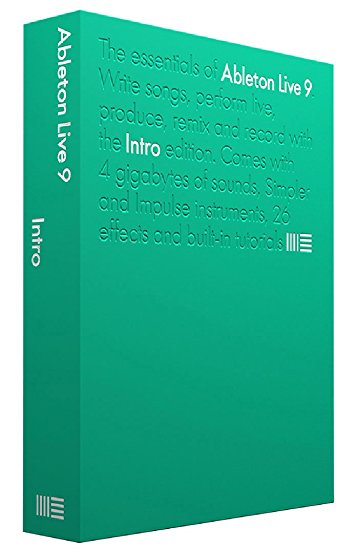
Ableton Live 9 Intro
Ableton produces software that is intuitive and incredibly easy to learn to use effectively. The layout is extremely thought out and is a pleasure to work on. In other words, it is simplicity at its finest.

While there are free options for recording software out there (most notably: Audacity), it's worth paying for software that functions and is easy to use. Not to mention, the quality of recordings are fantastic! I've used Audacity, Cubase, and Pro Tools extensively in the past, but none of them hold a candle to how much I prefer Ableton. This software includes up to 16 record-able tracks for one session and tons of audio effects ranging from chorus to reverb.
Street Price: $79
Amazon Link
Microphones

Shure KSM32 Condenser Microphone
This is the new version of the model I have (KSM27). Condenser mics are highly sensitive and offer high fidelity recording, meaning they are ideal for recording acoustics and vocals. If you want to record your ukulele organically via a microphone, a condenser is what you need.
In order to work, condenser mics require phantom power: a constant +48 volts. The Roland QuadCapture has this power feature built into it, making it ideal for use with these mics. Now, I realize this microphone is expensive, so I have linked a cheaper alternative below. But, I'm a big believer in this concept: if you purchase a quality product once, you will not have to worry about purchasing a replacement or upgrading to a better mic in the future. I have gotten over 10+ years of use out of my Shure KSM27. It is a fantastic microphone.
Street Price: $200 - $549
Amazon Links
Shure KSM32 Condenser Microphone
Shure PGA27 Condenser Microphone (Cheaper Alternative - $200)
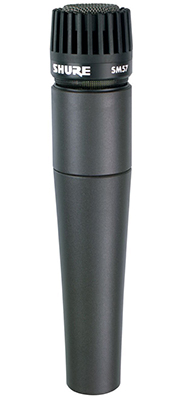
Shure SM57 Dynamic Microphone
An industry standard! The legendary SM57 is ideal for mic-ing amps when recording. It's also a versatile mic, and can be used for mic-ing amps in live performance or as a vocal mic. Dynamic mics are more rugged than condenser mics, but do not offer the same high fidelity quality recordings. Generally, they are much cheaper than condenser mics.
For me, this mic is only used for the above situations. The Shure KSM condenser mic is used for all of my Rock Class 101 recordings.
Street Price: $99
Amazon Link
Microphone Accessories

DR Pro Tripod Mic Stand
The DR Pro mic stand is a heavy-duty stand that is built rugged and tough. This is not some cheap plastic stand. And let me tell you, I have abused the hell out of this stand. It has gone to countless gigs with me, been thrown in the back of cars and trucks, and fallen off my Rock N Roller gig cart onto concrete. But, just like the song "I'm Still Standing", it is! Amazing quality. One of the best features is the telescoping boom. You will always get a great angle and be able to keep the mic out of the shot if recording videos.
Street Price: $70
Amazon Link
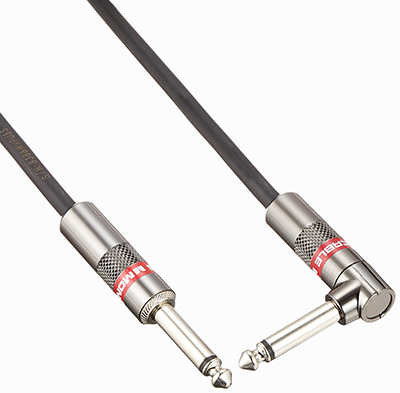
Monster Classic Instrument & Microphone Cables
If you have an ukulele with a pickup, a quality instrument cable will make the difference between great tone and okay tone. Monster cables provide excellent quality at a reasonable price. They are also backed by a lifetime guarantee. If the cable becomes faulty, you can send it to Monster directly for a replacement! The same holds true for microphone cables (which use XLR inputs). I recommend 10-20 ft. cables, dependent on your needs.
If you plan to record your ukulele direct and use a microphone for your voice, then you will need one instrument cable and one XLR microphone cable. You will need 2 more instrument cables (I recommend 6 ft.) to connect your studio speakers to the audio interface. So, in total, you will need: 3 instrument cables and 1 microphone cable.
Street Price: $15 - $30
Amazon Links
Monster Cable Classic 1/4 Inch Straight to Straight Instrument Cable 6 ft.
Monster Cable Classic 1/4 Inch Angled to Straight Instrument Cable 12 ft.
Monster Cable Classic XLR Microphone Cable 10 ft.
Studio Speakers & Headphones
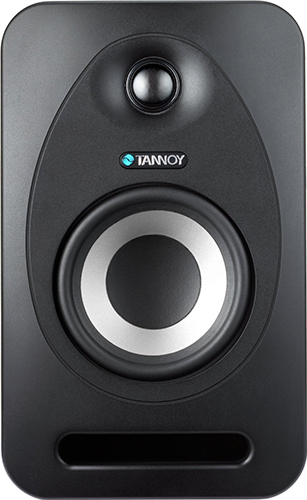
Tannoy Reveal 402 Studio Monitors
No home recording studio is complete without a pair of studio speakers! A year ago I was looking to purchase new speakers, with one criteria in mind: I wanted high quality speakers that did not break the bank and were compact enough to fit on my desk. And wow, I can't say enough good things about the Tannoy Reveal speakers, they have been a pleasure to own. Audio is projected crisply and details are heard clearly. These are important aspects when mixing/editing music.
But, don't just take my word for it... Watch the video (from Pete Thorn - amazing musician) that sold me on them below.
Street Price: $230 for a pair (2)
Amazon Link

Sennheiser HD 280 Pro Headphones
Quality headphones are important for several reasons:
1) If you are recording overdubs (a track on-top of another track), then you will need headphones to listen to the first track as you record the next track. But, why? Explain that more... When overdubbing, you want to record every track separate from the other. Yes, you could play the backing track through the speakers and record, but it will bleed into the new recording. Thus, headphones allow you to record a clean take with no background noise.
2) If you are mixing in a noisy environment. For example, cars, planes, and delivery trucks can all be a nuisance when mixing/editing audio. The HD 280 are closed-ear headphones with up to -32 dB attenuation of outside sound. This means, they will cut down on outside noise, which in turn means you can get your work done!
These headphones had excellent reviews and fit within my budget of $100. They offer fantastic sound quality and are very comfortable to wear (lots of padding).
Street Price: $100
Amazon Link
Video Camera

iPhone 7
"No Way!" Yep, that's usually the reaction I get when I tell people I record on my iPhone. The truth is, smartphones offer some of the best cameras on the market! I record using the 1080p mode for HD quality, which produces a great looking video. But, the trick really comes down to lighting. Below, we will highlight the gear I use to properly light my videos.
I opted for the 128 GB model, as it provides plenty of storage for video content. This way, if you are shooting hours worth of material, you do not have to constantly worry about running out of space on your phone. The iPhone connects to the computer via USB drive and you can easily export the video files straight to your desktop. After that, simply drop them into the video editor program and align the audio of the video file to the high quality audio you recorded via an interface. And boom, you've got a high quality video with superb audio.
Street Price: $649 - $849
Apple Link
Video Editing Software

PowerDirector 15 Ultra
I have tried countless video editing software programs (Pinnacle & Corel to name a couple), and hands down PowerDirector by Cyberlink is the easiest and most user-friendly platform on the market. It may not have all the bells and whistles of Apple Final Cut Pro, but most of us just need an intuitive editor that includes text overlays and fade in and out capability. And that's what this program excels at.
It is extremely easy to align the high quality audio I record to the video file from my iPhone. After that, editing is a breeze as you can trim and splice the video simply by pushing a couple buttons on the keyboard. There is a video preview screen on the top right, so you can always see what you are working on in real-time. Here is a picture of the layout from a bloopers video I created.
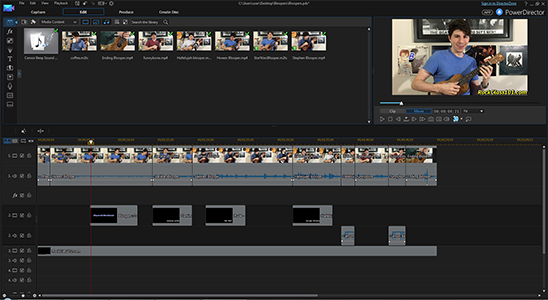
Street Price: $54
Amazon Link
Video Camera Accessories
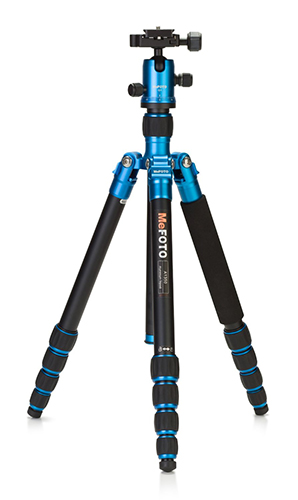
MeFOTO Aluminum Roadtrip Travel Tripod
A tripod is essential, as it allows you to produce a perfectly leveled and steady (no hand-held shaking) video. I opted to purchase a MeFOTO tripod. MeFOTO is a highly regarded (name brand) tripod manufacturer. When I was looking for a tripod for my iPhone, I wanted a quality product that was sturdy and was not made with plastic components. I also needed a tripod that was portable, as I intend to take videos (like this one) in other locations.
Now, I'll be the first to admit, $200 is not realistic for most people to spend on a tripod. So, I included a cheaper alternative below that features most of the functions and capabilities of the more expensive MeFOTO.
Street Price: $62 - $199
Amazon Links
MeFOTO Aluminum Roadtrip Travel Tripod
ZOMEI M5 Camera Tripod (Cheaper Alternative – $62)

Shoulderpod S1 Professional Smartphone Rig / Tripod Mount
If you decide to use your smartphone for recording, you will need to purchase an adapter that mounts to the tripod and secures (holds) your smartphone. The Shoulderpod S1 is a very well made product that uses an adjustable pressure screw to clamp onto any device securely. This means, it should work regardless of using an iPhone or Android, or if you have a bulky case on your phone (I protect my phone with the OtterBox Defender Series, which is a large/thick case).
The S1 uses standardized fittings (connectors) which should be compatible with most tripods and will fit the 2 suggested tripods above.
Street Price: $35
Amazon Link
Video Lighting

Fovitec StudioPRO - 3 Point Lighting Kit
Lighting is the most important aspect of creating a professional quality video. In the guide, we will discuss how to properly set up 3 point lighting for recording. But, for now let's look at the difference between using a 3 point setup and not using it.

Before (shot on iPhone 6s) using 2 cheap clamp-on lights ($9 each), one off-set to the right, the other to the left.

After (shot on iPhone 6s) using a 3 point lighting setup.
As you can see, the difference is drastic! I can't state it enough... if you want quality videos, don't ignore the lighting aspect.
Street Price: $190
Amazon Link
Fovitec StudioPRO - 3 Point Lighting Kit
Article by: Andrew Hardel
